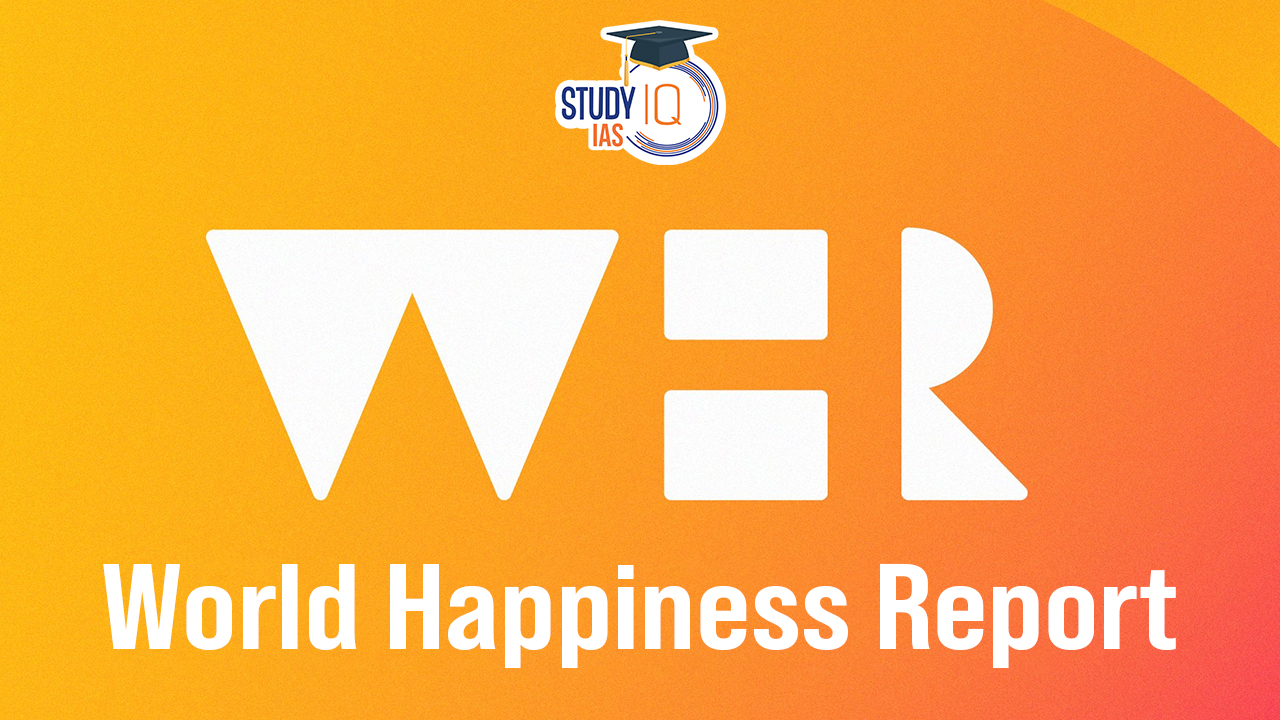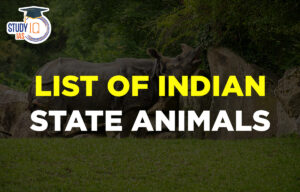Context: The World Happiness Report 2025 was recently published by the Wellbeing Research Centre at the University of Oxford.
World Happiness Report 2025 Highlights
- It is an annual report published by the University of Oxford’s Wellbeing Research Centre in partnership with the UN Sustainable Development Solutions Network and Gallup.
- For the eighth consecutive year, Finland has been named the happiest country in the world.
- Top 10 Happiest Countries in 2025: Finland, Denmark, Iceland, Sweden, Netherlands, Costa Rica, Norway, Israel, Luxembourg, Mexico.
- Costa Rica (6th) and Mexico (10th) entered the top 10 for the first time.
- India’s Rank: 118 (Last time India’s position was 126th).
- Countries such as Pakistan, Nepal, Palestine and Ukraine are ranked above India.
- Bottom Five Unhappiest Countries in 2025: (143) Zimbabwe (144) Malawi (145) Lebanon (146) Sierra Leone (147) Afghanistan (Ranked as the unhappiest country for the fourth consecutive year)
World Happiness Report Overview
|
World Happiness Report Overview
|
| Publication |
World Happiness Report |
| Publisher |
United Nations Sustainable Development Solutions Network |
| Leading Country |
Finland |
| Dominant Region |
Nordic countries |
| Least Happy Country |
Afghanistan (Ranked as the unhappiest country for the fourth consecutive year) |
| India’s Ranking |
118 out of 147 countries (Last time India’s position was 126th). |
| Urgent Concern |
Widening happiness inequality, declining children’s happiness |
| Emphasis |
Policy action for well-being and happiness enhancement |
| Join Us on Whatsapp |
Click to Join |
World Happiness Report 2025
Top Happiest Countries
| Rank |
Country |
| 1 |
Finland |
| 2 |
Denmark |
| 3 |
Iceland |
| 4 |
Sweden |
| 5 |
Netherlands |
| 6 |
Costa Rica |
| 7 |
Norway |
| 8 |
Israel |
| 9 |
Luxembourg |
| 10 |
Mexico |
Least Happiest Countries
| Rank |
Country |
| 147 |
Afghanistan |
| 146 |
Sierra Leone |
| 145 |
Lebanon |
| 144 |
Malawi |
| 143 |
Zimbabwe |
Top 10 Happiness Rankings (Asia)
| Rank |
Country |
Global Rank |
| 1 |
Taiwan |
30 |
| 2 |
Singapore |
34 |
| 3 |
Kazakhstan |
43 |
| 4 |
Vietnam |
46 |
| 5 |
Thailand |
49 |
| 6 |
Japan |
55 |
| 7 |
Philippines |
57 |
| 8 |
South Korea |
58 |
| 9 |
Malaysia |
64 |
| 10 |
China |
68 |
Regional Happiness Trends as per World Happiness Report 2025
Global Overview
- Nordic Dominance: Finland maintains its position as the world’s happiest country for the eighth consecutive year, followed closely by Denmark, Iceland, and Sweden. These nations exemplify high levels of social trust, robust social support systems, and a strong sense of community.
- New Entrants: Costa Rica and Mexico have entered the top 10 happiest countries for the first time, ranking 6th and 10th respectively. This underscores the significance of social connections and community engagement in enhancing well-being.
Regional Insights
- Europe: A convergence in happiness levels is observed between Eastern, Central, and Western Europe, with countries like Lithuania (16th), Slovenia (19th), and Czechia (20th) showing significant improvements.
- North America: The United States has fallen to its lowest-ever position at 24th, attributed to declining social trust and increased social isolation. Similarly, Australia has slipped out of the top 10, now ranking 11th, with New Zealand close behind at 12th.
- Middle East and Africa: Afghanistan remains the unhappiest country, followed by Sierra Leone and Lebanon, highlighting ongoing challenges in these regions.
Sharing is caring!


 Places in News for UPSC 2025 for Prelims...
Places in News for UPSC 2025 for Prelims...
 List of Indian State Animals with their ...
List of Indian State Animals with their ...
 World Heritage Day 2025, Theme, Objectiv...
World Heritage Day 2025, Theme, Objectiv...





















